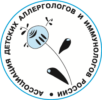Prevalence of allergic diseases among teenagers 13–14 years old in Tyumen city
ALLERGOLOGY AND IMMUNOLOGY IN PEDIATRICS | ORIGINAL ARTICLE
Volume 66 • Issue 3 • September 2021, pp. 35-39
Received: 31.07.2021 | Publication date: 30.09.2021
K.P. Kuzmicheva, E.I. Malinina, O.A. Richkova, L.V. Klimina, A.E. Rodionova, A.V. Tetyueva
Tyumen State Medical University, Tyumen, Russia
Abstract
Introduction.
The prevalence of bronchial asthma and other allergic diseases, in particular atopic dermatitis and allergic rhinitis, nowadays can be estimated by global population studies, such as the International Study of Asthma and Allergy in Childhood (ISAAC), and the Global Asthma Network (GAN). There are some difficulties in epidemiological surveillance, diagnosis, treatment and prevention of these nosologies in most of the countries, especially in developing countries with low availability of medical care. Thanks to the GAN program, therapeutic recommendations were made to reduce the global burden of allergic pathology.
Purpose of the study.
To study the prevalence of clinical symptoms of allergic diseases in children 13–14 years old in the city of Tyumen, as well as highlight the main risk factors that contribute to the disease development.
Materials and methods.
This cross-sectional study was carried out in 2019 as part of the Global Asthma Network (GAN) project among adolescents 13–14 years of age in the city of Tyumen. The respondents filled out standardized Russified questionnaires, which contained 48 questions concerning the symptoms of allergic diseases and environmental factors.
According to the results of the analysis of 3007 questionnaires, it was found that asthma-like symptoms were ever observed in 19,2% of participants, current asthma-like symptoms were noted in 8,5% of respondents, 5,1% of adolescents had medical-verified bronchial asthma. The prevalence of lingering allergic rhinitis and current allergic rhinoconjunctivitis was 28,9% and 12,2% respectively, while only 5,4% of respondents had a verified diagnosis of allergic rhinitis. A quarter of the respondents had symptoms of atopic dermatitis at some point (25,6%), only 4,5% had symptoms of current atopic dermatitis, 3,8% had been diagnosed with atopic dermatitis. The negative impact of heavy freight traffic in the city of Tyumen, as well as the use of paracetamol, revealed the increase in the prevalence of allergic diseases.
Conclusion.
As a result of data analysis, it was found that the prevalence of current asthma-like symptoms, symptoms of atopic dermatitis and allergic rhinitis significantly exceed the numbers of official statistics. Often, adolescents with symptoms of an allergic disease do not have a correct diagnosis, which is confirmed by a low percentage of positive answers regarding the verification of the diagnosis by a doctor. Among children 13–14 years old in the city of Tyumen there is a high percentage of the prevalence of symptoms of allergic rhinitis, which is probably associated with climatic, geographical and environmental factors.
References
1. Platts-Mills T.A. The allergy epidemics: 1870–2010 // J Allergy Clin Immunol. 2016; 136(1): p. 3–13. doi: 10.1016/j.jaci.2015.03.048.
2. Chuchalin A.G., Khaltaev N., Аntonov N.S. et al. Chronic respiratory diseases and risk factors in 12 regions of the Russian Federation // Int J Chron Obs Pulmon Dis. 2014; 9: p. 963–974. doi: 10.2147/COPD.S67283.
3. Burney P., Malmberg E., Chinn S. et al. The distribution of total and specific serum IgE in the European Community Respiratory Health Survey // J Allergy Clin Immumol. 1997; 3: p. 314–322. doi: 10.1016/s0091-6749(97)70048-4.
4. Ellwood P., Asher M.I., García-Marcos L. et al. ISAAC Phase III Study Group. Do fast foods cause asthma, rhinoconjunctivitis and eczema? Global findings from the International Study of Asthma and Allergies in Childhood (ISAAC) phase three // Thorax. 2013; 68(4): p. 351–360. doi:10.1136/thoraxjnl-2012-202285.
5. Brain M. Filaggrin Mutations Strongly Predispose to Early-Onset and Extrinsic Atopic Dermatitis // J Invest Dermatol. 2007; 127(3): p. 724–726. doi: 10.1038/sj.jid.5700587.
6. Dharmage S.C., Lowe A.J., Matheson M.C. et al. Atopic dermatitis and the atopic march revisited // Allergy. 2014; 69(1): p. 17–27. doi: 10.1111/all.12268.
7. Somanunt S., Chinratanapisit S., Pacharn P. et al. The natural history of atopic dermatitis and its association with Atopic March // Asian Pacific J Allergy Immunol. 2017; 35(3): p. 37–143. doi: 10.12932/AP0825.
8. Мигачева Н.Б. Распространенность атопического дерматита у детей школьного возраста в г. Самаре // Аллергология и иммунология в педиатрии. 2019; 3(58): с. 38–44. [Migacheva N.B. Rasprostranennost atopicheskogo dermatita u detey shkolnogo vozrasta g. Samara // Allergologia i immunologia v pediatrii. 2019; 3 (58): s. 38–44 (In Russ)].
Citation
Kuzmicheva KP, Malinina EI, Richkova OA, Klimina LV, Rodionova AE, Tetyueva AV. Prevalence of allergic diseases among teenagers 13–14 years old in Tyumen city. Allergology and Immunology in Pediatrics. 2021;3(66):35–39. (In Russ.) https://doi.org/10.53529/2500-1175-2021-3-35-39
For correspondence:
Kseniya P. Kuzmicheva
postgraduate student at the Children's Diseases with course of immunology and allergology Department of the Faculty of General Medicine, Tyumen State Medical University
![]() 0000-0003-2014-4709
0000-0003-2014-4709
54, Odesskaya Str., 625023, Tyumen, Russia
ksyu-sidorova@list.ru
Supporting agencies:
not specified
Acknowledgments:
The team of authors would like to express their deep gratitude to the medical volunteers of Tyumen State University for their help in conducting a survey of a huge number of respondents. Special thanks to Inga Leonidovna Nekrasova, curator of medical volunteers.

This work is licensed under a Creative Commons Attribution- ShareAlike 4.0 International License
